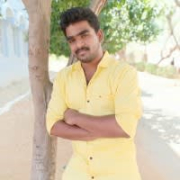

Splunk Enterprise Security and Rapid7 InsightIDR are prominent competitors in the cybersecurity solutions market, each targeting unique organizational needs. Splunk Enterprise Security stands out in larger enterprises with its comprehensive data integration and advanced threat detection capabilities, providing a significant advantage in complex environments.
Features: Splunk Enterprise Security delivers robust data integration, advanced threat intelligence, and a customizable analytics engine, positioning it as a top choice for managing complex data environments. Its comprehensive visibility and powerful management tools support hybrid cloud operations effectively. Rapid7 InsightIDR focuses on intuitive setup, user behavior analytics, and automation in threat detection, emphasizing a cloud-first approach for straightforward and efficient operations.
Room for Improvement: Splunk Enterprise Security could improve its visualization tools, streamline its setup process, and enhance documentation to facilitate better user experience during deployment. Rapid7 InsightIDR would benefit from stronger third-party integration, enhanced AI capabilities, and greater flexibility in creating custom security rules, aligning more closely with varied security scenarios.
Ease of Deployment and Customer Service: Although versatile, Splunk Enterprise Security can be resource-intensive and is accompanied by reliable but sometimes slow customer support. In contrast, Rapid7 InsightIDR is acknowledged for its straightforward deployment process and efficient customer service, though there is room for improvement in terms of customization options to tailor solutions more specifically to individual needs.
Pricing and ROI: Splunk Enterprise Security follows a data volume-based pricing structure, which can be costly and provide a greater challenge in terms of ROI for smaller entities despite its extensive capabilities. Conversely, Rapid7 InsightIDR's endpoint-based pricing is more affordable and predictable, offering strong ROI, particularly attractive to budget-conscious organizations looking for cost-effective cybersecurity solutions.
| Product | Market Share (%) |
|---|---|
| Splunk Enterprise Security | 7.4% |
| Rapid7 InsightIDR | 2.2% |
| Other | 90.4% |



| Company Size | Count |
|---|---|
| Small Business | 20 |
| Midsize Enterprise | 5 |
| Large Enterprise | 6 |
| Company Size | Count |
|---|---|
| Small Business | 109 |
| Midsize Enterprise | 50 |
| Large Enterprise | 263 |
Parsing hundreds of trivial alerts. Managing a mountain of data. Manually forwarding info from your endpoints. Forget that. InsightIDR instantly arms you with the insight you need to make better decisions across the incident detection and response lifecycle, faster.
Splunk Enterprise Security delivers powerful log management, rapid searches, and intuitive dashboards, enhancing real-time analytics and security measures. Its advanced machine learning and wide system compatibility streamline threat detection and incident response across diverse IT environments.
Splunk Enterprise Security stands out in security operations with robust features like comprehensive threat intelligence and seamless data integration. Its real-time analytics and customizable queries enable proactive threat analysis and efficient incident response. Integration with multiple third-party feeds allows detailed threat correlation and streamlined data visualization. Users find the intuitive UI and broad compatibility support efficient threat detection while reducing false positives. Despite its strengths, areas such as visualization capabilities and integration processes with cloud environments need enhancement. Users face a high learning curve, and improvements in automation, AI, documentation, and training are desired to maximize its potential.
What Are the Key Features of Splunk Enterprise Security?In specific industries like finance and healthcare, Splunk Enterprise Security is instrumental for log aggregation, SIEM functionalities, and compliance monitoring. Companies leverage its capabilities for proactive threat analysis and response, ensuring comprehensive security monitoring and integration with various tools for heightened operational intelligence.
We monitor all Security Information and Event Management (SIEM) reviews to prevent fraudulent reviews and keep review quality high. We do not post reviews by company employees or direct competitors. We validate each review for authenticity via cross-reference with LinkedIn, and personal follow-up with the reviewer when necessary.